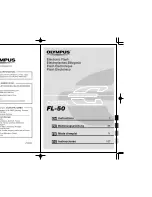
41
Tips
• The depth of field changes depending on three factors; aperture, focal length of the
lens, and shooting distance as follows.
1) The wider the aperture opening, the shallower the depth of field, and the
narrower the aperture opening, the deeper the depth of field.
2) The longer the focal length (such as with a telephoto lens), the shallower the
depth of field, and the shorter the focal length (as with a wideangle lens), the
deeper the depth of field.
3) The closer the subject is to the lens, the shallower the depth of field, and the
farther away the subject is from the lens, the deeper the depth of field.
• Controlling the depth of field gives your picture its own character.
Depth of Field
When you focus on your subject, you will find that not only is the subject itself in focus
but objects in a certain distance range both in front of and behind the subject appear
reasonably sharp. This in-focus zone is known as “depth of field.”
Control of depth of field enables selective blurring of the background elements of a
picture or letting the major subject stand out.
By pressing the depth of field preview lever, you can check how the background image
will appear in the photograph.
Light-Metering Methods
Full-aperture metering
With a built-in sensor, this camera employs TTL full-aperture metering to determine the
exposure by measuring the brightness of subjects through the lens. With an Ai-type lens
attached, full-aperture metering is performed, and you can set the exposure while main-
taining full brightness in the viewfinder.
Stop-down metering
This method is used when the meter coupling lever does not operate in synchronization
with the lens aperture.
With this method, after making the aperture setting for actual shooting, the light is mea-
sured when a Non-Ai-type lens or close-up ring is used.
Содержание FM3A
Страница 1: ...INSTRUCTION MANUAL E E ...
















































